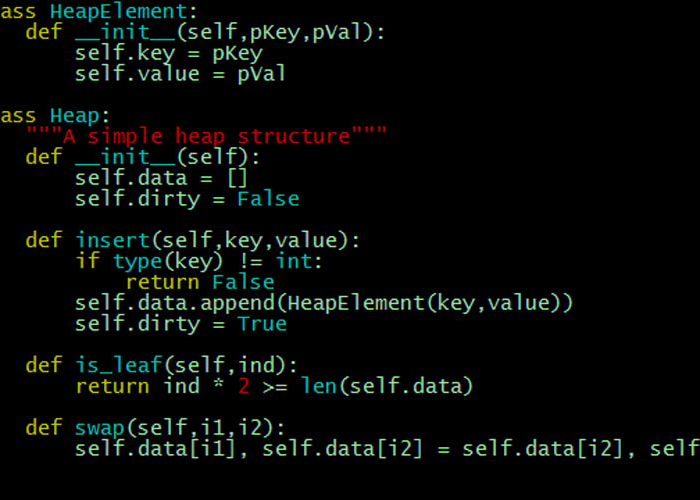Data structures and algorithms are the foundation of computer science and play an essential role in effectively addressing intractable issues. Data structures and algorithms are vital tools for dealing with real-world problems, but they become even more so when paired with the simple and flexible Python programming language. The following explains the significance of Data Structures and Algorithms using Python.
1. Effective issue resolution
Problem-solving skills can be substantially improved with the help of data structures and algorithms, which offer practical ways to store, organize, and manipulate data. Python’s extensive library of built-in data structures, including lists, tuples, sets, and dictionaries, and robust algorithms empower programmers to handle data and solve problems quickly and effectively.
2. Reusable code
Python’s abundance of libraries and frameworks facilitates the developing and reusing standard data structures and algorithms. You’ll find fast data structures and algorithms hidden in several widely-used Python packages like NumPy for numerical computing, Pandas for data analysis, and Django for web development. To make the most of these libraries and reduce development time, programmers need a firm grasp of data structures and algorithms.
3. Scalability
Since data sizes are expected to continue expanding at an exponential rate, scalability must be taken into account while designing new software. Large-scale data processing operations, such as big data analytics, machine learning, and real-time data processing, necessitate efficient data structures and algorithms. Python’s extensive library of data structures and algorithms makes it ideal for developing large-scale systems that can process vast volumes of data.
4. Problem simplification
The abstraction layers provided by data structures and algorithms help programmers think about complex problems in more manageable ways. Algorithm design for tasks like route planning and social network analysis can be simplified by employing a data structure like a graph, which abstracts complex interactions between items. Because of its flexible syntax and object-oriented programming support, Python is appropriate for clearly and concisely implementing abstracted data structures and algorithms.
5. Coding and Interviews
Coding challenges and technical interviews for software engineering positions often center around data structures and algorithms. Learning Python’s data structures and algorithms increases candidates’ competitiveness in the job market and programming contests. You have excellent problem-solving skills and deep comprehension of computer science ideas if you can grasp the complexities of various data structures and algorithms and implement them in Python.
6. Better code quality
Code quality can be improved by correctly using data structures and algorithms. Suitable data structures can reduce the complexity of the program’s logic, making the code more readable and easier to update. In addition to making code easier to read and maintain, efficient algorithms can reduce its overall complexity. Python is an excellent language for developing clean, manageable code because of its simplicity, readability, and support for data structures and algorithms.
7. Advanced concepts
Many more advanced areas of computer science can be traced back to data structures and algorithms. These include machine learning, AI, cryptography, and network algorithms. A good foundation in Python is invaluable when studying and applying advanced concepts in data structures and algorithms.
Conclusion
Understanding data structures and algorithms is critical for effective programming, problem-solving, reusability of code, and professional growth in computer science. A programmer’s ability to optimize, scale, and create reliable software depends significantly on their familiarity with the data structures and techniques available in the Python programming language.


